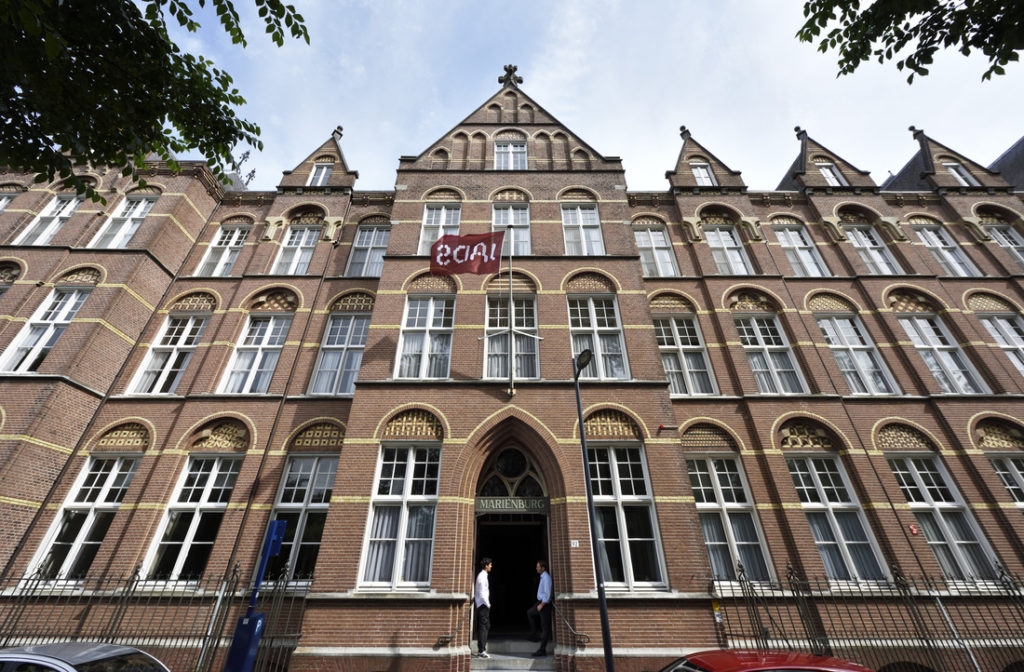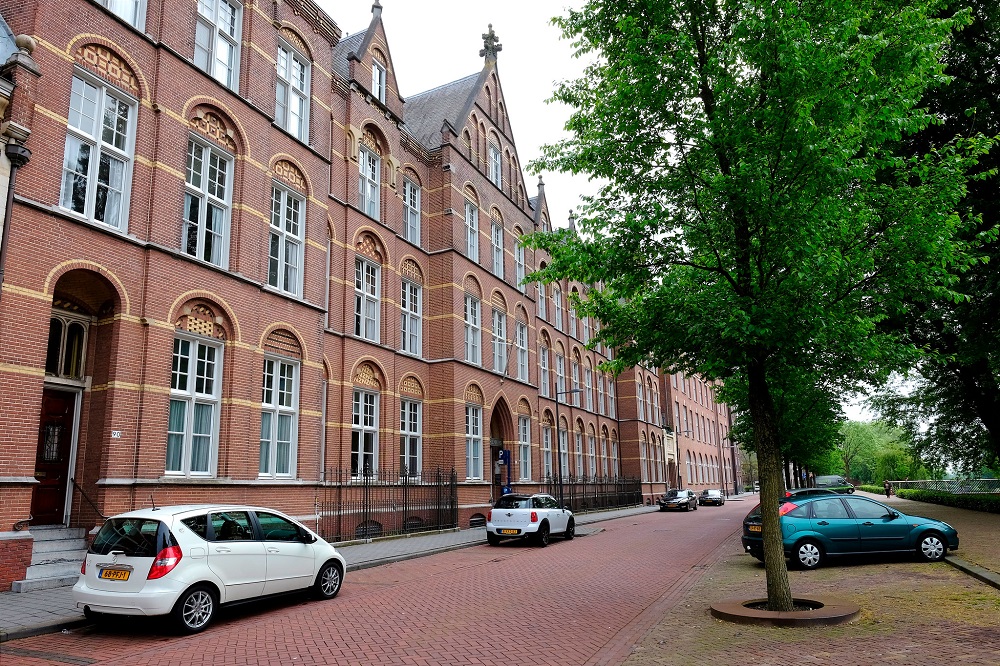Concerns about JADS: data academy in Den Bosch cannot stand on its own two feet yet
Students still have a hard time finding their way to the Jheronimus Academy of Data Science (JADS). As a result, the data academy in Den Bosch is short of millions every year. Concerns about the joint project of Tilburg University and Eindhoven University of Technology are growing.

De Nederlandse versie lees je hier.
It starts cheerfully in December 2016: with a grand opening by Queen Maxima, the unique collaboration between Tilburg University and Eindhoven University of Technology is clinched. With the opening of the new data hub in the Mariënburg monastery, Den Bosch may call itself university city in one fell swoop. Above all, there is optimism. Data is the new gold, and the Jheronimus Academy of Data Science (JADS ) has everything it needs to become a major player in the field of data research.
Yet there have been concerns from the start, including disappointing student numbers (in Dutch), and the academy running more losses than expected (in Dutch). A matter of time, university administrators assure worried University Council members: companies are eager for students who know their way around our data-driven society. Those enrollments will be fine, including the necessary revenues.
Moreover, the universities run little financial risk; the province of North Brabant and the municipality of Den Bosch guarantee a generous start-up capital of 20 million euros. Spread over ten years, after that JADS must be able to fend for itself.
Millions in deficit
Meanwhile, that contribution in subsidies of 20 million was fully exhausted in 2020, according to Tilburg University’s annual report (in Dutch) from that year. But JADS is not out of the red yet. From TiU’s annual reports for the past three years, a more precise picture of the deficits emerges: in 2022, the operating deficit is 1.9 million, in 2021 the deficit is 2.5 million, and in 2020 the deficit is 1.5 million. All in all, JADS turned a loss of nearly 6 million euros over the past three years.
That amount will be divided equally between Tilburg University and the Eindhoven University of Technology. The two universities agreed on a joint arrangement in 2019. This entails that TiU and TU/e account for the joint assets, liabilities, revenues, and charges of JADS in proportion to the interest in their financial statements (50 percent each). Surpluses and deficits arising from this collaboration are also distributed in the same way.
As to the causes of the deficits at JADS, the annual reports do not mention them. In the TiU management report (End-year MARAP) of 2022, there is a brief explanation: ‘The operating result at JADS is worse than budgeted. The development of the intake in the Master’s program as well as the lagging turnover for professional education are the main explanations.’
Concerns in the University Council
During the Finance and Infrastructure Committee (CFI meeting) on March 27, 2023, Council members express concerns about the deficits at JADS. They also question what those exact student numbers of the Master’s program are and what the target number is. The answer to the latter question, according to the Board, is 350. With 350 students, you reach the so-called break-even point.
The question of how many students are actually enrolled now is not immediately answered, at a later date via an internal memo it is: ‘The number of students enrolled at JADS Den Bosch on October 1, 2021 was: 142. On October 1, 2022: 165. These are the enrolled students from TiU and TU/e together.’
During the ensuing University Council on April 6, Bert Willems of employee party TiU International shows concern about the low number of Master’s students at JADS. After all, in 2022 only 19 more students applied compared to the year before. Thus, the target number of 350 does not yet seem to be in sight.
Rector Wim van de Donk acknowledges that there are concerns. The circumstances in which JADS began have changed, he explains. There is more competition. For example, several universities are now fully engaged in data science, and there are also new initiatives in that area within our own universities.

‘Two universities became the parents of a beautiful baby, we do need to give that baby a good chance to develop,’ he outlined the situation of JADS during the Council meeting. ‘Right now we are reconsidering what is going on and what needs to be done. We have to make a strategic decision; we are having that discussion with colleagues from Eindhoven. It is being worked on. It takes effort and patience, and yes, there are some concerns.’
Not yet breaking even
There are other subsidies that JADS makes use of, according to the 2022 annual report. ‘From 2022, the province and the municipality provide project subsidies for the implementation of the JADS 2021-2025 Project Plan as a contribution to the strategic agenda on data economy.’ The Overview of Incidental & Budgetary Subsidies 2022 states that the Eindhoven University of Technology received a project subsidy of over one and a half million euros in that year. Titled: Mission-Driven Innovation Policy, Data Economy, JADS Project Plan.
Both universities provided an additional financial contribution of 425 thousand euros to JADS in the same year. ‘In addition to tuition fees and the variable government contribution related to funded students, degrees, theses, and design engineering certificates,’ the explanation from the 2022 annual financial report reads.
Financially, JADS is not yet in a strong enough position, confirms JADS communications advisor Els Oostveen in a written response, in which the institute provides more insight into its future strategy and vision. ‘JADS is in a crucial phase from start-up to scale-up,’ JADS explains, among other things.
‘Much has been accomplished in the past seven years, but the scale of operations is still far too small to break even.’ It also states that it will probably take ‘considerable investment and decades’ to build an institute like JADS from scratch. ‘This requires partners with a long-term vision, who above all also want to jointly embrace and help realize a growth ambition.’
Future Prospect
That does not mean nothing is being done in Den Bosch, according to the same response. For example, they have started JADS Labs: these are ‘large-scale five-year research programs in which companies and researchers collaborate on major societal challenges. Four labs have now been started with KPN, Deloitte, DPG Media, and LaNubia, among others. With these Labs, millions of euros from the NL-AI Coalition and the business community have been invested in research at JADS.’
JADS also highlights that the two-year Data Science in Business and Entrepreneurship Master’s program was ‘highly rated’ by students in last year’s National Student Survey and that graduates are ‘highly sought after in the job market.’
Currently, JADS is working on a strategy based on three pillars: ‘visibility and broadening of the range of study programs offered, expansion of JADS research labs, and efficient operations. There may also be two new data Master’s programs, fifteen open positions for PhD candidates, and an improvement plan for business operations. JADS’ new strategy will be worked out in more detail during the course of this year.
Translated by Language Center, Riet Bettonviel






